Mackerel fishing is a ton of fun, especially for kids. In fact catching mackerel as a 6 year old is how I became so interested in fishing! I can still remember the excitement and how much fun I had going mackerel fishing when I was younger.
Mackerel are one of the most plentiful and abundant fish in the North Atlantic. Atlantic mackerel are a staple part of many predatory fish's diet. They make awesome bait for bluefish, striped bass and bluefin tuna.
An added bonus is that I find mackerel to be delicious. They are an abundant local food source which can be caught from May through December in the waters surrounding Cape Cod & the Islands.
The rest of this article is based on my own personal experience. If you have any insight or words of wisdom, or have experienced something different from what is described in this article, then please let me know by leaving a comment below.
Where to Fish for Mackerel
Here off Cape Cod I have done most of my mackerel fishing in Cape Cod Bay. Typically I will catch my first mackerel of the season in the bay during May in 50-80 feet of water. The mackerel action in the bay can be great early in the season, but usually it quiets down during the heat of the summer. When that happens I will often still find mackerel at Stellwagen Bank and in the rich waters around Provincetown.
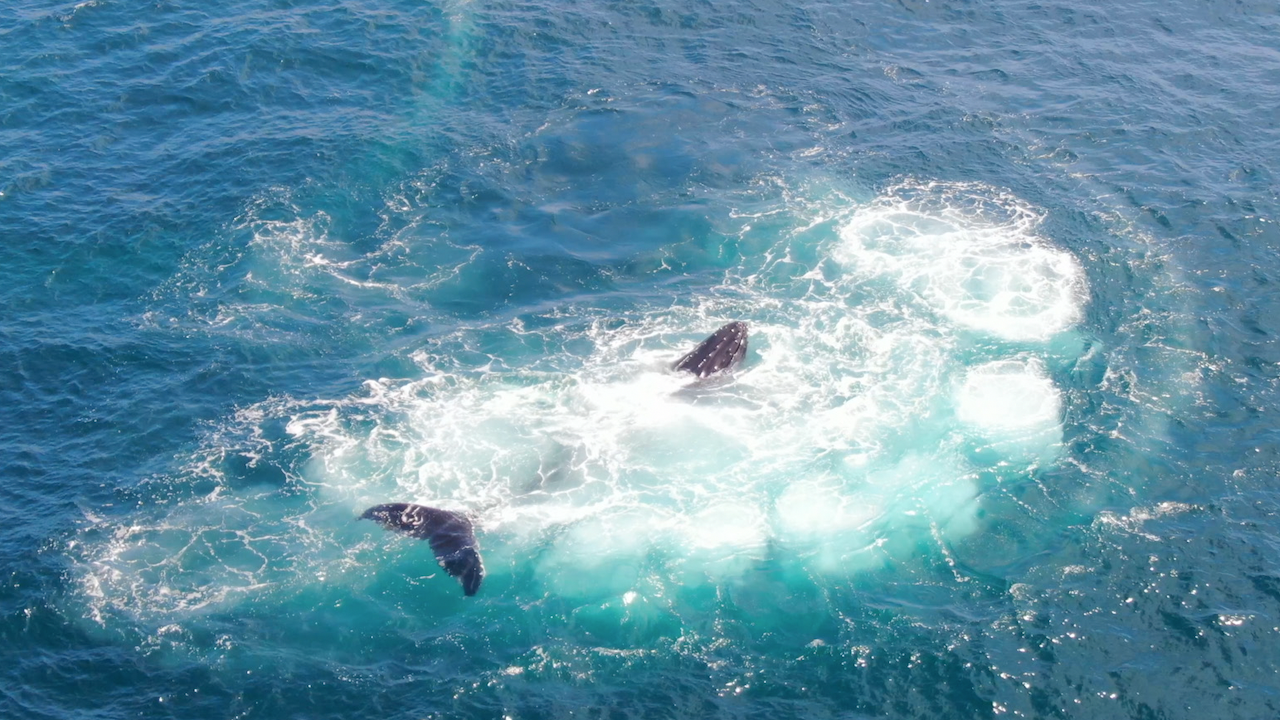
Stellwagen Bank and the rich waters off the Outer Cape are home to mackerel from May through December. Mackerel are an important food source for humpback whales and many other species.
In recent years I have caught plenty of mackerel while fishing for giant bluefin tuna bait in the cool water east of the Cape. I have never caught mackerel in Nantucket or Vineyard Sound although I'm sure they occasionally make appearances there. On rare occasions I have caught a mackerel or two in Buzzard's Bay, usually near the West End of the Cape Cod Canal.
Speaking of the canal, it is possible to catch mackerel from shore at the East End where the canal opens into Cape Cod Bay. When I was a kid my dad would take me to the Scusset Jetty around the third week of May and I remember catching mackerel there on several occasions. I also know some anglers will catch mackerel casting from the bulkhead area at the Sandwich Marina during November and December.
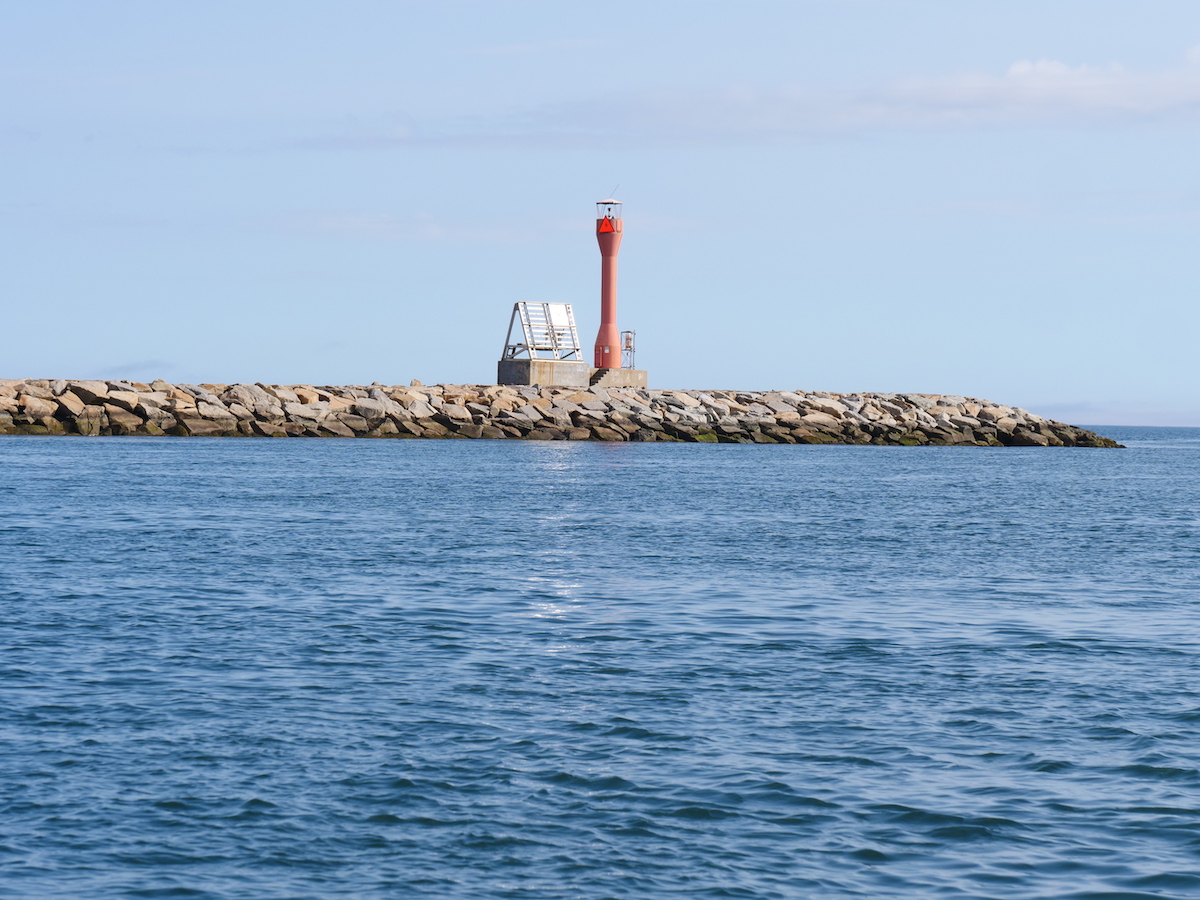
Growing up I remember fishing for mackerel with my dad from the breakwater at the Scusset Jetty. For your best chance try going when the current is moving west from Cape Cod Bay into Buzzard's Bay.
How to Find Mackerel
Mackerel travel and feed in vast schools, and they can oftentimes be found throughout long expanses of water. Finding mackerel when fishing from a boat requires a knowledge of how to use your sonar, how to read the water, and and how to read birds.
To start, head to well known mackerel haunts. I usually find mackerel in 50 or more feet of water, but they can at times be found shallower. Mackerel often show up in the same spots year after year, however long stretches of water can contain mackerel so moving around is often the key.
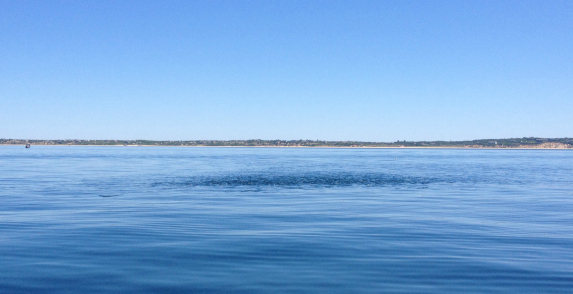
On calm days it's possible to see mackerel feeding on the surface. I came across this mackerel school off Truro in Cape Cod Bay during late June.
When cruising, mackerel on my sonar will show up as green or turquoise/blueish marks or "clouds". Make sure to adjust your sonar unit's sensitivity level so it reads well at high speeds. Keep in mind that mackerel are a lot smaller than the striped bass you may be accustomed to marking on your sonar. Increasing the sensitivity level may be necessary to avoid missing the fish.
Birds and other sea life will often give clues to the presence of mackerel. Gannets in particular can be a helpful clue to the presence of mackerel. They will dive bomb out of the sky and into the water at tremendous speeds, plucking hapless mackerel from the ocean. The splash can often be seen from great distances. If you happen upon an area that is getting pelted by gannets, then mackerel might be in the vicinity.
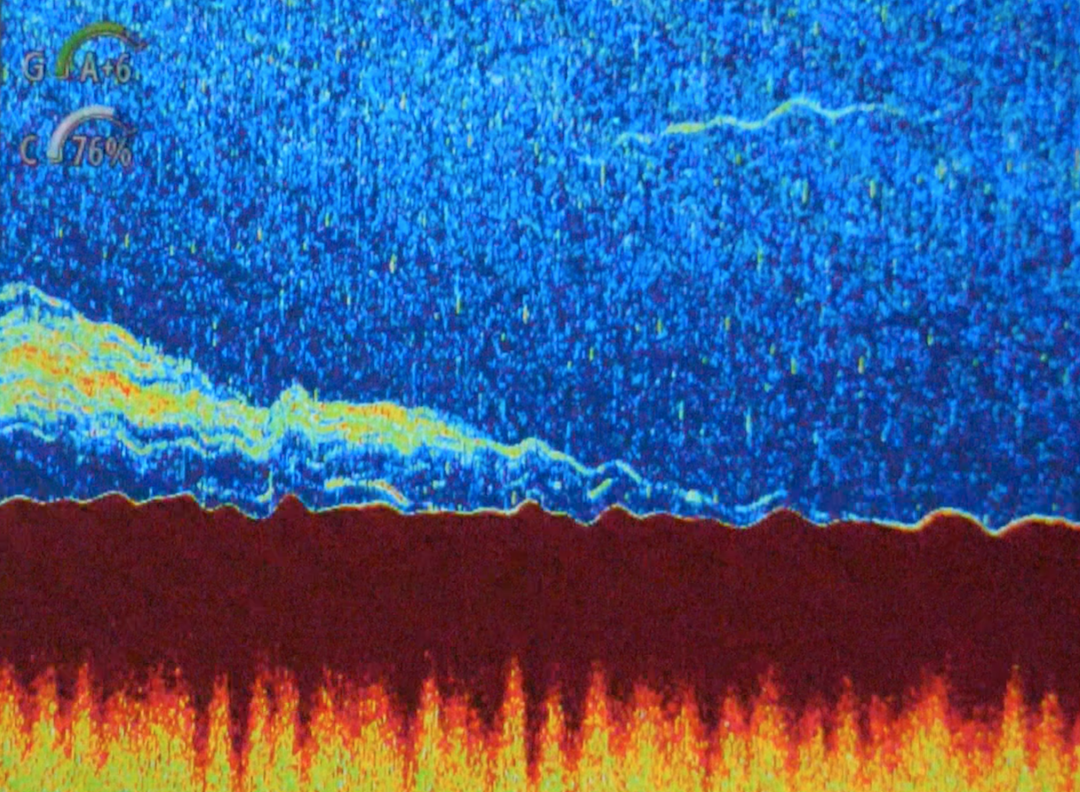
A school of mackerel on the sonar swimming along the bottom in about 125 feet of water off Chatham.
How to Catch Mackerel
Mackerel can be caught using various techniques and methods. When I was 12 or 13 I remember having a blast catching mackerel using small topwater lures such as the Heddon Zara Puppy. Small metal lures also work and I would also imagine it's possible to catch them fly fishing.
However one of the most effective methods is to jig with sabiki rigs. After locating an area holding macks, simply drift in neutral and slowly jig a sabiki rig. Sabiki rigs feature a half dozen hooks (or more) with feathers, beads and/or shiny pieces of foil. A slow jigging motion usually works well with sabikis, however it can pay to experiment.
I like sabiki rigs that are made of at least 30 pound monofilament. I do not like sabiki rigs that are made with less than 20 pound mono because they tend to break and get tangled more easily. Sabiki rods can help reduce tangles and make fishing for mackerel easier and more fun.
I've found when mackerel fishing that most mackerel seem to hang 15-30 feet beneath the surface. However I have caught them on the bottom in over 100 feet of water, so be sure to use enough weight on the end of your sabiki to get the rig down to where the mackerel are.
When the mackerel fishing is hot, full strings of 3-6 mackerel are not uncommon. To make removing the hooks easier (and to lessen damage to these precious live baits) I will sometimes crush the barbs on each sabiki hook. Barbless hooks help make life a lot easier during the height of a mackerel blitz. However when the mackerel fishing is slow, I will not crush the barbs.
In Conclusion
As previously mentioned, mackerel make fantastic live baits for most predatory fish in the Cape Cod area. On top of that, fishing for mackerel can be a lot of fun. When the fishing is hot it's possible to catch hundreds of mackerel in just a couple hours-which is great if you have young kids on board.
Mackerel are also good to eat! To enjoy mackerel, simply bleed out and gut the mackerel as soon as you catch them and then bury them in ice.
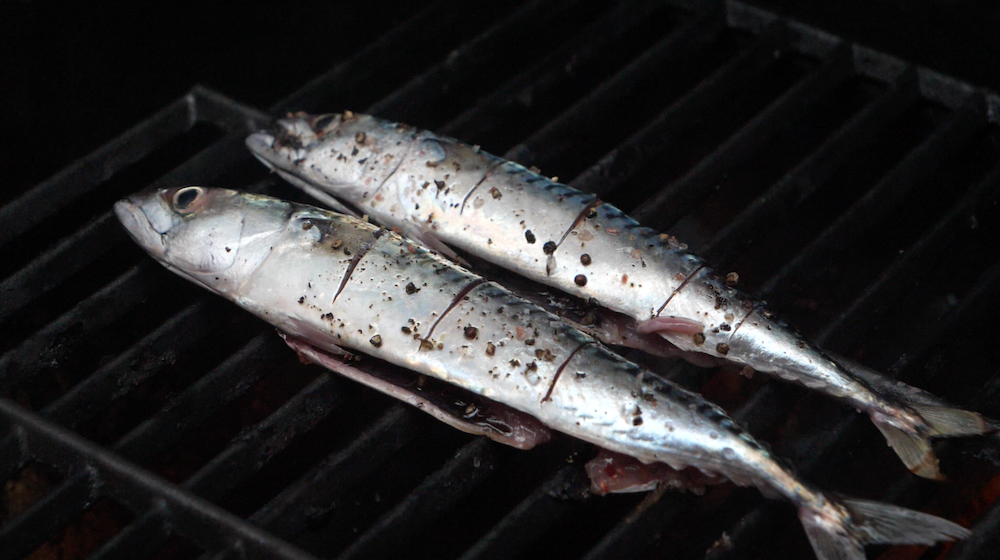
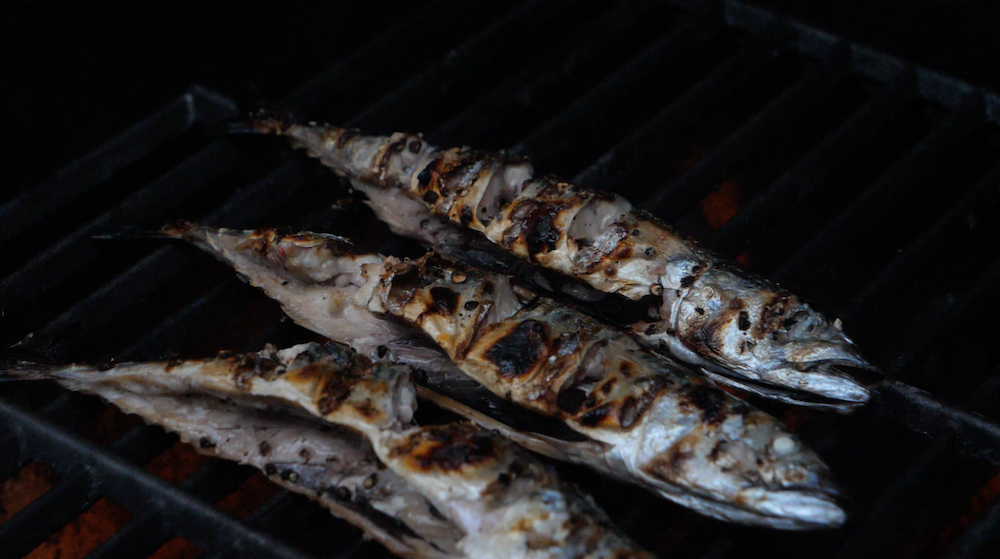
When you get home make several slits in each side of the mackerel and coat the fish in olive oil, salt and pepper. Place them on the grill whole until the outsides get a little charred and voila!
I am sure there are many other ways to prepare mackerel and if you know of any good recipes then please feel free to share them below in the comments. Best of luck mackerel fishing and as always, tight lines!


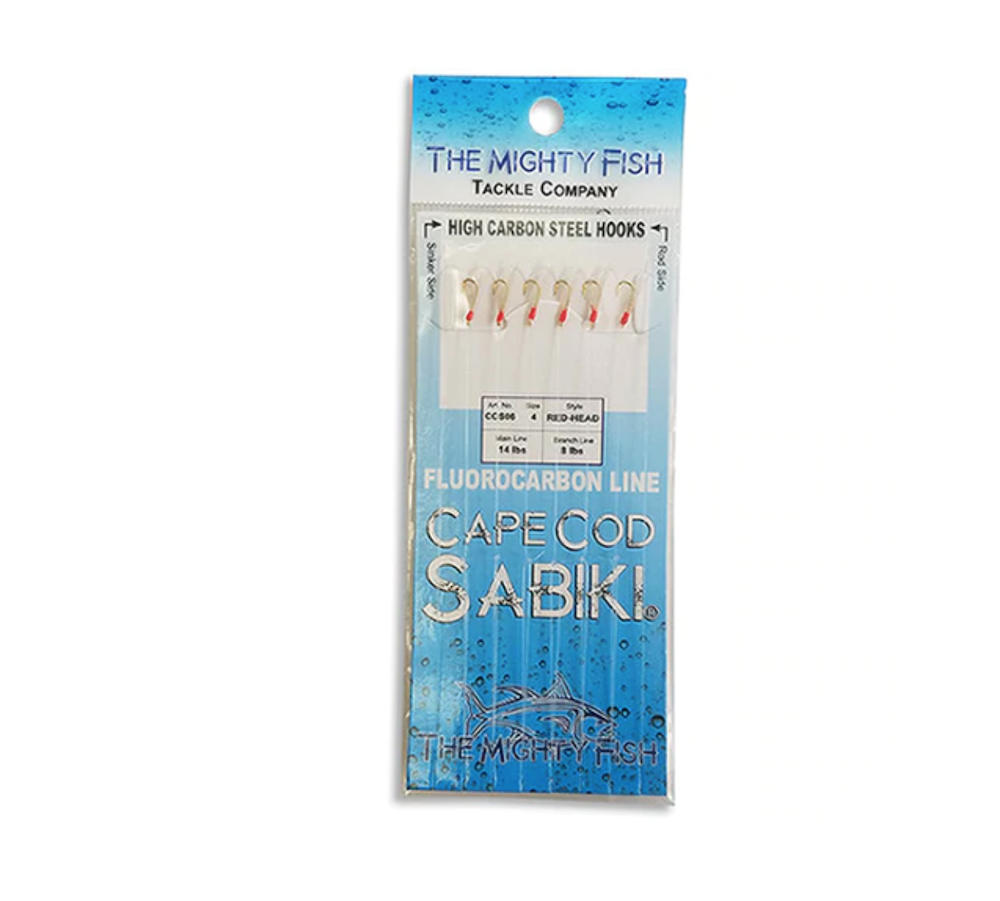


Once again a good primer for catching mackerel. One can also learn how to tie their own flies and learn how to rig each flies to the main line 0f at least 40 pound test , when doing more than three hooks on a rig . Using a RJ Small teaser knot from the leader to each fly at least 30 pound test the hook will not droop down and stand off much better as you jig the rig up and down. One of the most simple rigs to tie is use #1 or 1/0 stainless steel long shank hooks and simply slide a cut red tubing over the hook and over the knot . The rule of thumb when out on a boat is to jig the area not showing up on your screen under the boat in 10 to 20 feet of water . As you mentioned they will show on your screen when they are in deeper water, however when they are being chased a lot of time for what ever reason they will hide under a boat shadow, and it is more fun when you make the drop to not have to reel them up as deep . Another way to find them is to put on a 5 ounce weight and troll the rig in the last of the white water being left by the wake of the boat as you troll 1.5 knots. THe rig often will ride the white water and the fish will come up and take the hooks , it does not need to be deep in the water column and simply dead stick the rod and watch the tip of the rod as it loads up. THis was something I learned from an old Canadian troller that only used alumunim on the hooks
If the mackerel are small to medium 5 hooks on the rig are fine , but when you get into the large and jumbo size 3 hooks are better. The less hooks on the rig the more time you will spend fishing in the water and not untangling them once you get them in the boat. Do not be afraid to troll a live one on wire or lead core while also trolling for mackerel on top .
As mentioned, looking out for Gannets is a sure sign that some mackerel are around. When are feeding they often would get to full they were unable to get up and fly, unless the regurgered the mackerel back up. One other comment I would make is when cutting mackerel for bait , cut it diagonally, from the head . Over many years of using cut bait the bias proved to be more affective . Peace and Prayers Some time we should put together a class room seminar on how to make your own mackerel rigs , it brings another whole process into your learning process.
Most fun I’ve had standing up; catching 1.5 to 3 pound Mackerel in Cape Cod Bay using my ultralight, 5′ rod and Mitchell 308. 10 minutes to land the 3 pounders!! Any rod you use for freshwater bass will be great fun and haul em in a bit quicker too. Great when smoked and eaten with a sharp cheddar and a cold beer. Tight lines.
That’s awesome Joe! I might have to give the ultra-light mackerel idea a try. I was also thinking they could be fun to catch on my 5 weight fly rod. Thanks for the comment and I hope you are having a great weekend.